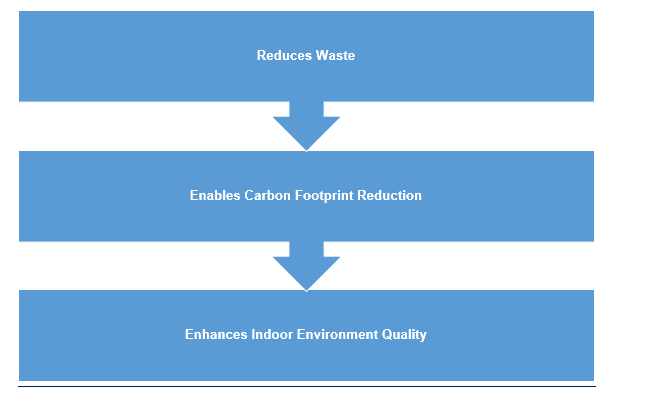Building a Greener Future: Exploring the World of Sustainable Architecture
In general, sustainable architecture refers to structures made to lessen human effect on the environment. Choosing building materials, designing and implementing heating, cooling, plumbing, waste, and ventilation systems, and integrating the constructed environment with the surrounding natural landscape are all included in an eco-friendly approach to modern construction.
Sustainable design aims to reduce the negative environmental effects of buildings by improving efficiency and moderation in the use of resources, including materials, energy, development space, and the wider ecosystem. When designing the built environment, sustainable architecture takes a deliberate approach to energy and ecological conservation.
The goal of sustainability, or ecological design, is to make sure that how we use the resources that are currently available does not have long-term negative impacts on our collective well-being or make it impossible to obtain resources for alternative uses.
Benefits of Sustainable Architecture

Due to the obvious effects of global warming, there is now a significantly greater need for a more sustainable and affordable solution. The environmental harm already done by the construction industry is beyond comprehension. The United Nations Environment Programme (UNEP) states that “increasing construction activities and urbanization will increase waste, which will ultimately destroy natural resources and wildlife habitats over 70% of the land surface from now until 2032.
Due to the use of eco-friendly building techniques during the design process, sustainable architecture helps to reduce waste. Composites are created by recycling waste materials like vinyl and plastic. Further applications include structural sheathing, flooring, and roofing. To create cellulose insulation, used to help make buildings soundproof, recycled paper is used as a component. It has a higher capacity for insulation and is comparably less expensive than fiberglass.
The energy requirements of a building can be significantly reduced through the intelligent application of sustainable construction methods. The most effective tool for reducing energy use in a building is a solar power system. A typical solar panel installation can produce 120 watts of energy in a single day. Since LED bulbs only use 25% of the energy of traditional halogen incandescent bulbs, switching to them can result in significant energy savings. A higher standard of living is promised by the use of these safer materials.
Examples of Sustainable Architecture
Although wood has been used for construction for a very long time, cross-laminated timber, which is created by fusing layers of lumber together, has emerged as a sustainable option for prefabricated homes and city towers in Europe and the United States.
Copen Hill in Copenhagen, Denmark, which calls itself “the cleanest waste-to-energy power plant in the world,” is another example of cutting-edge ecological architecture. It features a real ski slope, a roof you can stroll across, and a façade made for climbing.
Bullitt Center, the greenest office building in the world, is distinguished by its inclusion of every sustainable element a building which includes composting toilets, toxic-free building materials, an inviting stairwell, and 80% daylighting through high-performance windows indicating that all of the building’s energy is generated sustainably.
The Floating School in Lagos, Nigeria is a structure made of locally sourced wood constructed by locals, supported by 256 plastic drums, and designed to float above the water. Rainwater is used to flush the toilets, and roof-mounted solar panels produce electricity.
Conclusion
The use of green architecture has been proven to lessen environmental degradation, making it an essential component of contemporary building technology. Building form and appearance design cannot be done in a vacuum anymore. The fabric, controlled fittings, and building services are now all inextricably linked. To be deemed sustainable development, a building’s form, function, and interactions with its surroundings must now be carefully balanced.
Author: Divyansh Tiwari
